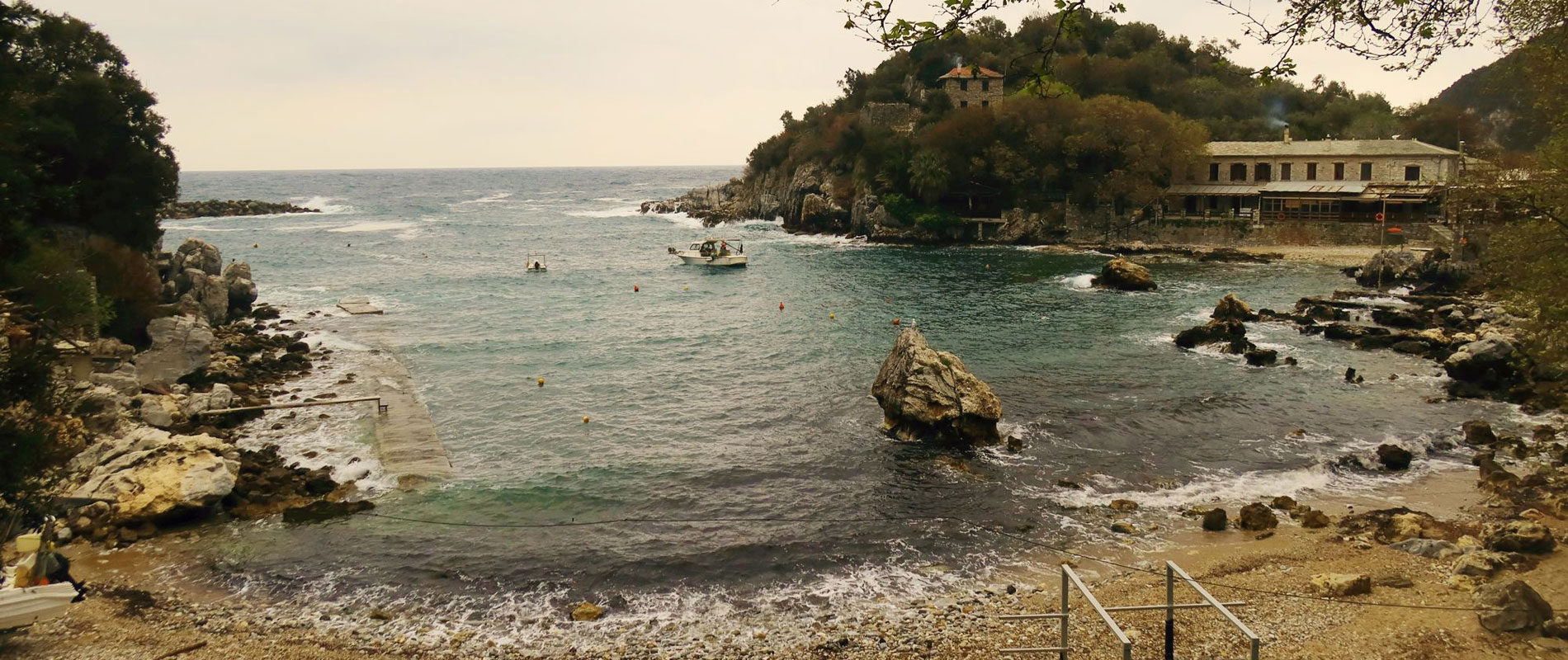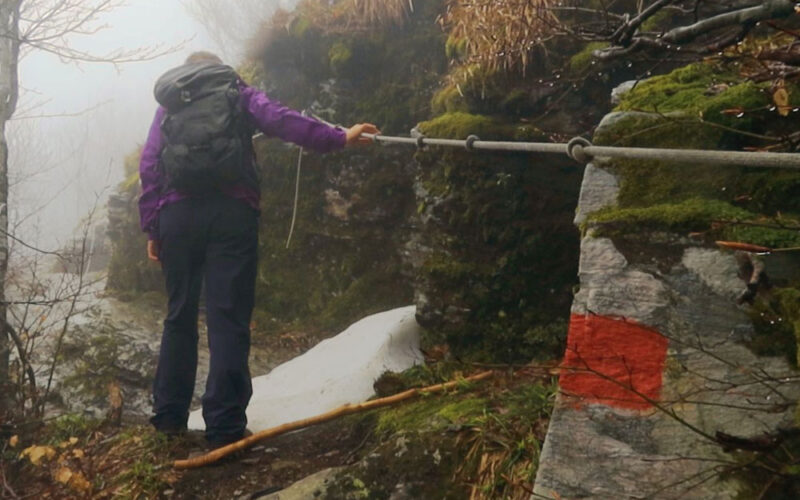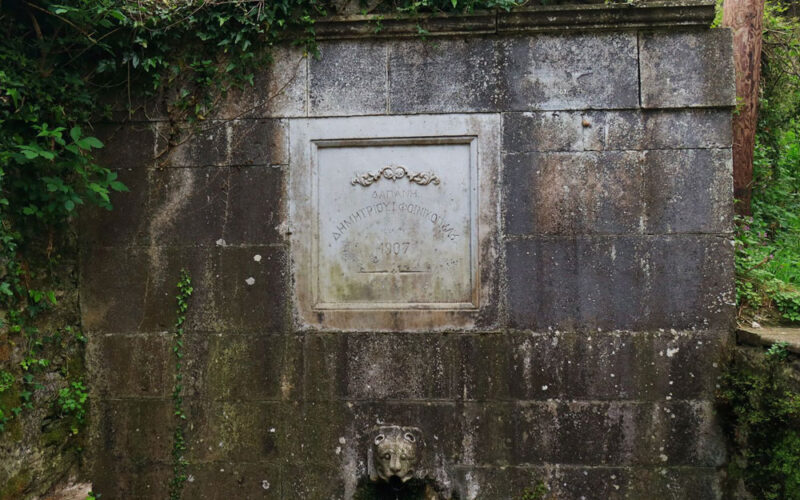The fifth part of LPT is a long and demanding trail with a total length of 24km. Nevertheless, it shows to the visitor all the aspects of the natural beauty of Pelion, combining many different ground types and sceneries.
The hiker crosses pristine forests of beech, around the area of Chania, walks along rocky ridges, close to Schitzouravli, gets lost at the hidden bays of Aegean Sea and wanders around the colorful orchards.
After walking through the small settlement of Chania, we hike heading to Schitzouravli and Dramala, two of the highest peaks of Pelion. Then we descend to the traditional village of Mouresi. The trail continues to descend towards the more popular village of Ntamouchari where we can visit a charming natural port. There we find the well-preserved cobbled alley which takes us to the first neighborhood of Tsagarada. After we enjoy the numerous variations of the landscape we arrive at the town square of Taxiarches, the social center of the four different neighborhoods of Tsagarada.

THE SETTLEMENTS
Mouresi
Mouresi is a leafy place, well-hidden under the shade of the lush slopes of the mountain above it. It’s located at an altitude of 350m, built following the traditional architectural style of Pelion. Orientated towards the Aegean sea, it’s one of the oldest settlements of the region. The majestic mansions, the marvelous town square and the historical chapels with the sculpted wooden panels are the main features of the village. The three gracious linden trees encircle the town square, where looms the ornate church of Holy Trinity.
Within a short distance from the settlement, close to the high hill named Tsouka, the visitor can find a cave with stalagmites and stalactites. There it’s believed that the centaurs had their residence and it’s called Cave of Chiron.
Ntamouchari
This is a small and traditional fishing village nested in the inner part of the bay. Ntamouchari is a very well sheltered natural port which used to be the only seaport for Mouresi and Tsagarada. Two natural coves have been formed: The picturesque harbor at the north side and a wild beach with white pebbles at the south. There are also a few well-hidden huts and buildings, in the olive groves and in the coastal forest around of the settlement, following the traditional architecture.
Between the two coves the visitor can find the remains of a Venetian castle, which provided shelter and protection from the pirates. Nowadays, Ntamouchari is the most authentic port of the eastern side of Pelion.
Tsagarada
Tsagarada is a quite expanded village which consists mainly of four smaller settlements. These distinct neighborhoods are named after the church which looms in their center: Agioi Taxiarches, Agia Paraskevi, Agios Stefanos and Agia Kuriaki. Among them, Agios Stefanos is the oldest one, built in 1746.
The most visited beaches, adjacent to the settlement, are the beach of Fakistra, Karavostasia and Milopotamos, which combine the mountainous and coastal scenery with exceptional beauty.
There are 784 inhabitants and the village of Tsagkarada belongs to the municipality of Zagora-Mouresiou.
Another hidden gem of the area is the Achilopoulios Commercial School of Tsagkarada, founded in 1865 with the contribution of Achilopoulou brothers. The school used to accept students of business studies from all over the country. The building was partially destroyed after the earthquake of 1955 but it was fully renovated in 2001. Today, it hosts the cultural organization of the municipality while it’s also a reception hall for different educational and cultural activities.
The visitor can also visit Nanopouleios School, built in the beginning of the 20th century and with the financial support of Nikolaos Nanopoulos. It used to serve as a secondary school for financial studies, whereas today it hosts the primary school of Tsagkarada and other smaller villages. It’s worth a visit to the stone single arch bridge which used to connect Tsagkarada with Xourichti above the stream of Milopotamos. This finest and impressive creation was only recently collapsed.
Tips
This is a long trail which includes hiking on rocky terrain and sections of continuous ascend and descend. A group of less experienced hikers can get tired and feel uncomfortable after walking on steep slopes for many hours. The last part from the beach of Ntamouchari towards Tsagkarada is quite demanding to be done in the same day. Nevertheless, with an overnight stay at Ntamouchari the overall experience becomes much more pleasant. There is drinking water at Chania and in the center of the settlements.
Warnings
Hiking along the mountainous part from Agrioleukes until the lower peak of Dramala can be challenging due to the unpredictable weather conditions. The slope is quite exposed to the eastern winds of the area and especially in the winter months the area is usually covered with snow. Be equipped with the right weather-appropriate clothing.













